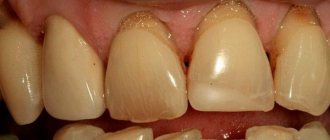General information about zirconium
This element belongs to the secondary subgroup of the 4th group of the 5th period of the periodic system of D.I. Mendeleev - atomic number 40. Zirconium in its usual form is a shiny metal, which is distinguished by a silver-gray color, is ductile and resistant to corrosion. Compounds of this substance are widespread in the lithosphere. In nature, zirconium compounds are known exclusively with oxygen in the form of silicates and oxides.
Despite the fact that zirconium is a trace element, up to 40 miners are known in which this substance is present in the form of salts and oxides. This is a universal gemstone, but this opinion is wrong. Although, in appearance it is even similar to a diamond. A few facts about this substance:
- Zirconium is produced only in laboratory conditions, and the mineral zircon is used as the main component.
- Although zirconium is a transparent stone, due to the use of additional impurities, various shades are obtained.
- It is used in jewelry as a replacement for minerals and jewelry, due to which the price of the final product becomes significantly lower.
Many people are confused and believe that cubic zirconia, zircon, zirconium are the same substance. In fact, they are all different, just similar in composition to each other:
- Zirconium is a metal that is similar in appearance to steel.
- Cubic zirconia is a man-made brilliant crystal. In terms of external characteristics, it is similar to a diamond. Zirconium oxide is used for production - the process is carried out under the influence of temperatures above 2.5 thousand degrees.
- Zircon is a stone that is similar to gold. It is of natural origin and looks expensive.
Minerals containing zirconium
Mineralogists are familiar with minerals containing cinnabar:
- Baddeleyite (zirconium oxide). It is used as an additive during the manufacture of refractory ceramics. The mineral also becomes a material for creating artificial diamonds.
- Eudialyte (zirconosilicate). This ore is suitable for the production of rare earth metals and zirconium.
No minerals containing zirconium have yet been discovered in nature. More recently, it was found that sea water also contains zirconium compounds. But scientists have not yet learned how to isolate metal from liquid.
History of zirconium stone
In terms of its attractiveness, this stone is not inferior to many precious analogues. It has been used since ancient times. During the dominance of Ancient Persia, all types of stones were almost devalued with the exception of transparent ones and those that had the characteristic shine of a diamond. In Asian countries, the stone became a talisman for local residents and visiting Russian merchants, who took zirconium products (especially beads) to their home to supplement their daughters' dowry.
In Europe, this material was not given much importance until the 19th century. Only swindlers and swindlers of those times sold cut transparent zirconium products under the guise of diamonds to high society ladies who did not understand jewelry. In addition, it was confused with sapphire, tourmaline and topaz due to its abundant color palette, and colorless stones began to be called “Ceylon diamonds” - they were cheaper and were considered second-class.
In the industrial field, this type of stone began to be used only in the 30s of the last century - widespread use was significantly limited by high costs. Today, zircon and its various compounds and alloys are used in construction, metallurgy, medicine and even nuclear energy. Bone and dental prostheses and surgical instruments are made from this mineral.
In the last century, Soviet scientists, trying to grow an artificial diamond, managed to grow artificial zirconium - it was called “zircon” or “cubic zirconia”. After the discovery was made, the cost of the stone decreased significantly, because... artificial synthesis always causes serious damage to any jewelry. Zirconium is not inferior in its characteristics to many precious stones, but for several decades it has occupied a niche in the middle price category.
Finding metal in nature
There are deposits of zirconium ores all over the planet. They can be found in the form of various salts, as well as single crystals, the mass of which is often more than 1 kg. Rich deposits are located in India, Brazil, West Africa, South Africa, etc. On the territory of the Russian Federation, impressive reserves of the metal are located in Siberia and the Urals.
On an industrial scale, zirconium dioxide and silicate, baddeleyite, and zircon are in demand . The latter is the most common mineral on our planet. People have known him since ancient times. In the Middle Ages, many jewelers produced products from “imperfect diamonds,” which at that time were called zircons. After cutting, they became cloudy and shimmered completely differently from natural diamonds.
Radioactive zircons are also found. Wearing products made from them has a negative impact on human health. Small stones that are relatively transparent or have a faint color are considered safe.
Large, intensely colored materials, especially those that are opaque or dark green, can have high radiation levels. Such stones are prohibited from being stored in home collections, cut or transported in large quantities. Despite its high prevalence in nature, for a long time its popularity was significantly lower compared to rare radioactive metals. This is explained by the fact that ore deposits are scattered and there are no large deposits.
Hafnium is often a neighbor of zirconium in ores; their properties are very similar. Individually, each of the metals has good properties, but taken together they are unsuitable for use. Separation requires multi-level purification, which significantly increases the cost of zirconium production.
Types of stone
Zircon is rightly considered one of the oldest precious minerals on Earth, because. Scientists have found that the age of this element reaches 3-4 billion years. Currently, several types of zirconium are isolated. The main criterion for this division is the variety of stone colors. The following varieties are distinguished:
- Starlit. A transparent stone, obtained by firing, has a bluish or blue tint.
- Malacon. It is dark brown in color and contains a small dose of radiation.
- Hyacinth. A transparent mineral characterized by brown, orange, and red colors.
- Matar Diamond. Transparent, colorless, extracted from the depths of the island of Matara - hence the name of this variety.
- Jargon. A mineral characterized by a straw, yellow or slightly golden color.
In addition, zirconium can be presented in the form of metal or powder - the scope of their application often differs. For example, the first is used for making jewelry, and the second is used in the medical and industrial fields. More information about these varieties:
- Hard metal. It has a shiny silver-gray tint and has a high degree of plasticity.
- Powder. A characteristic feature is the presence of small granules. Has a dark blue tint.
When heated, Zirconium can change color, allowing jewelers to give finished products a variety of shades. This mineral is:
- white (transparent, the most common);
- blue;
- blue;
- black (extremely rare);
- olive;
- green;
- pink;
- red;
- yellow (has the most pronounced radioactive background);
- brown (weak radiation);
- orange;
- purple.
Application in jewelry
The beautiful shine of cubic zirconia, which is almost indistinguishable from the shine of real diamonds, allows jewelers to use an artificial crystal to make jewelry. They are several times cheaper than those containing real gems. But only a professional will distinguish that the product contains a stone created by human hands, and not by nature. Jewelry with cubic zirconia always looks sophisticated and elegant.
- A blue stone in white gold will decorate a lady’s neck and will be the finishing touch to an everyday outfit. In addition, it will relieve obsessive thoughts.
- Brown mineral in silver is suitable for a lady with any hair color. It will add to its owner’s knowledge about the structure of the surrounding world.
- Floral-themed jewelry will suit a business style of clothing. They will add romance to the strict image of a business woman.
- Blue crystal products are ideal for blondes.
- A bright outfit requires jewelry with green minerals. This set is worn with a long floor-length dress.
- Stud earrings with colorless stones should be worn by young girls. Their ears are just right for such products. The amulet will help you figure out whether her admirer’s feelings are real or not.
- For a woman with large facial features, massive jewelry is suitable. They will enhance your sense of intuition.
- Representatives of the better half of humanity with an oval face should opt for medium-sized stones. They are able to help their owner no less than large ones.
Jewelry stores offer a huge selection of zirconium products. Every person, regardless of gender and age, will be able to choose a product to their liking.
Physical and chemical properties of zirconium
The structure of the mineral often contains impurities of other elements, for example, iron, copper, calcium, titanium, zinc, etc. More often, zircon is transformed into pyramidal or prismatic crystals. The mineral often contains uranium, which is why specimens with high background radiation are found. In terms of hardness, it is inferior to the competitors of its group - it is not durable against impacts or tearing. If stored carelessly, chips will fly off the stone, which will ruin the original aesthetic appearance. Physical and chemical properties:
- When intensely heated, it changes color, so the final product can have dark brown, bright turquoise and other shades. Over time, the shades obtained by thermal exposure fade and disappear completely.
- Cannot be cold processed under pressure.
- Instantly begins to oxidize at temperatures of 200-400℃.
- Great chemical resistance. Does not dissolve in acids, alkalis, does not corrode. When entering the human body, it does not interact with organs and tissues.
- The mineral produces dust, which becomes a threat to human life. This is due to the fact that it is easily flammable even from interaction with air.
- It melts at a temperature of 1825℃, and boils at 3500℃ and above.
- Under normal storage conditions, when the temperature is about 20℃, the density of the material is 6.45 g/cm3.
Cost per gram
The Commonwealth of Australia and the Republic of South Africa have long been the main suppliers of zirconium to the world market. The demand for metal is constantly increasing. And the amount of supplied material remains approximately at the same level. Therefore, its cost is constantly increasing.
At the moment, the price of a gram of cinnabar is about 100-200 rubles.
Zirconium has been known to human society for a century, but it still has not revealed all its secrets to people. It is unclear why the chemical element got its name, or what the full effect of the metal on a living organism is. Probably not all sulfurs are known in which this amazing silver-colored metal can be used.
Methods for obtaining zirconium
A stone with a metallic luster and a variety of shades is obtained experimentally in specialized laboratories. It is based on zircon, the main deposits of which are located in Australia, Brazil, Vietnam, Thailand, Sri Lanka and some other countries of the world. Synthetic stone is obtained in one of the following ways:
- Fusion with soda or soda. The process is carried out at a temperature of 500 to 600℃.
- Chlorination with carbon. Performed at a temperature of 900-1000℃.
- Fusion with potassium. Performed at 900℃.
- Sintering with lime or calcium carbonate. Carried out at 1100-1200℃.
Zirconium: prices, GOST, description
Designation – GOST 21907-76. It is a ductile and malleable (almost like gold), corrosion-resistant, paramagnetic, heat-resistant metal. Zirconium is resistant to sea and chlorinated water, ammonia, alkalis, acids, and does not lose its qualities at low and high temperatures. Mainly used in alloy with other metals. This not only gives it unique properties, but also increases manufacturability. Cost - from 5,500 rubles per kilogram, depending on the brand and manufacturer.
Today, zirconium is classified as a semi-precious stone. In the Middle Ages it was called the brother of diamond, but it lacks the inherent hardness of diamonds.
The healing properties of zirconium
Companies specializing in the manufacture of bracelets began to add particles of the Zirconium element to their products in order to give their products medicinal qualities in order to increase their sales. The bracelets supposedly lower blood pressure. It is believed that the stone can give strength and vigor throughout the day and ensure sound and healthy sleep at night. It does not change its properties when exposed to acids, therefore it is often used in the manufacture of medical instruments and equipment. More information about medicinal properties:
- accelerates wound healing;
- prevents the formation of pus;
- good antiseptic;
- has an antimicrobial property, which prevents the penetration of various infections into the body;
- prevents the penetration of radiation;
- helps relieve allergy attacks.
- Urolithiasis in cats
- How to smoke fish
- HDL cholesterol
Many types of stone, according to experts in the field of lithotherapy, have a positive effect on the functioning of the thyroid gland and endocrine system. At the same time, different properties are attributed to different colors:
- Black. Helps overcome the effects of hypothermia and colds.
- Yellow and red. Increase appetite and leukocyte production.
- Brown. Able to get rid of accumulated waste.
- Blue and blue. They help remove extra pounds, improve the functioning of the digestive tract, and normalize stool and appetite. The same properties are attributed to transparent minerals.
Compatibility with other stones in jewelry
Cubic zirconia is combined with many precious and semi-precious stones:
- Amethyst. The women's ring looks great. It will strengthen the lady’s intuition and ability to determine the hidden subtext of words.
- Corundum. The product is suitable for a lady of any age. It will give you confidence in your beauty.
- Emerald. The set will not only decorate your appearance, but also relieve headaches.
- Pearls. The necklace will provide an opportunity to get rid of problems in material terms.
- White agate. Decoration will help you see the world in colorful colors.
- Topaz. Jewelry can not only decorate, but also show the right path in a difficult situation.
Where is zirconium used?
The main area of application of the mineral is jewelry making. Products that are decorated with it are distinguished by their aesthetic and attractive appearance, because in beauty it is not inferior to a diamond. Earrings and necklaces with cubic zirconia are especially in demand. In addition, this stone is often used as a dummy on jewelry counters. Other applications:
- Based on this element, various alloys are made. They are used in some industries, for example, in the manufacture of structural materials, nuclear reactors, aircraft parts and other parts.
- Zirconium is found in superconducting magnets and is often used to oxidize alloys.
- The powder of this substance is used for the production of pyrotechnics.
- Participates as one of the elements in the composition of fire-resistant coatings for massive and complex equipment. The use of Zirconium in this case justifies the investment, due to which this substance is becoming increasingly popular in the industrial field - in jewelry it is being replaced by cubic zirconia.
- Another area of use is optics, required in aggressive environments and at high temperatures. For example, this is sending a spacecraft to other objects where the temperature jumps are more than 100 degrees in the sun and during a period that glass cannot withstand for a long time.
Zirconium in jewelry
An important feature of zirconium for jewelers is its lower hardness compared to diamond - 7.5 units on the Moss scale. When cutting a mineral, its insertion into the product is done carefully, because Careless handling will result in chips and scratches on the surface. For this reason, products with this stone require careful handling when worn. The appropriate cut allows this mineral to be no worse than fabulously expensive diamonds.
The zirconium group of stones is found in almost all modern jewelry. These gems are often framed in rings and rings. They shine in tiaras, earrings, necklaces, and wedding ensembles. They are often used to decorate pendants and pendants. The lion's share of gold jewelry with zirconium gems is produced in Sri Lanka, near one of the places where the mineral is most concentrated. When buying a product with zirconium, it is important to distinguish a genuine stone that has the following qualities:
- multifaceted refraction of light;
- the presence of a luster similar to metal or diamond;
- upon careful examination (preferably with a magnifying glass), inclusions will be visible in the gem;
- cubic zirconia, which is cheaper, is heavier than zirconium of the same size.
How to care for zirconium?
Unlike diamonds, which scratch even glass, zircon is a soft stone. Therefore, jewelry with it must be protected from mechanical damage. It is advisable to store them separately from other jewelry. Zircons are very sensitive to household chemicals. They can only be washed with a mild soap solution and wiped with soft napkins or flannel cloth.
Many varieties of zirconium will allow you to choose the stone that you like best. You just have to protect products with it from an aggressive environment and contact with something solid.
The magical properties of zirconium
Amulets, pendants, talismans and other jewelry made from Zirconium stone have become widespread. It has long been considered endowed with the ability to bring wealth and success to its owner. In ancient times, the mineral was the property of sages; it was believed that it brought them knowledge of the future, the gift of insight and the ability to penetrate the thoughts and inner world of other people. Worn as an amulet, zircon served as protection against liars and unkind people, and developed observation and memory.
The Zirconium mineral has many magical properties. In ancient India it was believed that he was able to control the sun and moon. This stone is widely used in various areas of industrial production; moreover, it is considered an ideal talisman for businessmen, intellectual workers, and travelers. It can even serve as a protective amulet for lovers, strengthening the spiritual and emotional connection between people. A hyacinth amulet will help travelers and military personnel maintain their health and life.
How it was opened
The history of the discovery of metal spans a century and a half:
- Dioxide of the substance was first obtained by the German chemist Martin Klaproth (1789). The source was the mineral zircon.
- Almost forty years later, his Swedish colleague Jens Berzelius obtained free, but contaminated zirconium.
- Samples of zirconium as a pure metal were isolated by 1925 by the Dutchman Anton van Arkel.
The origin of the term “zircon” is interpreted in two versions: from consonant Arabic or Farsi. They mean "cinnabar" and "golden" respectively.
Zirconium in astrology
All kinds of pendants, jewelry, talismans with zirconium gems are suitable for many zodiac signs. It is ideal for Aries, Capricorn, Aquarius, but it is not suitable for Taurus, Libra, Sagittarius, Cancer, more details:
- A stone with a metallic sheen is especially suitable for Aquarius. It will help them develop intuition, aesthetic taste, and the ability to analyze. Aquarians can wear jewelry made from different types of mineral, but yellow, gold or blue gems are ideal.
- The zirconium mineral will also help Aries to reveal its magical properties. It will help them develop attentiveness and caution. People with the sign of Aries are recommended to wear rings made of golden or red colored gemstones.
- Capricorns are better off giving preference to blue stones. It is better to wear rings with such a mineral on the left hand - this way the magical connection with a person with the Capricorn zodiac sign will be maximum.
- Zirconium gems are not recommended for Sagittarius, Taurus and Libra just because these zodiac signs are often selfish. They are also not suitable for Pisces and Cancers, who tend to concentrate on themselves.
Amulets and talismans
The use of amulets and talismans dates back to ancient times. It has long been noted that zirconium products have magical and healing powers.
It can be assumed that the magical and healing properties of zircons are associated specifically with radiation. It cannot be ruled out that with the help of these stones or magic balls made from varieties of zircon, magicians influenced the will of people. Zirconium is the stone of priests and rulers. The Grand Master of one of the Masonic orders is required to wear a ring with a zircon on his finger.
What is the difference between zircon and zirconium
Both gems look amazing and fascinate with their bright shine, beauty of shades, beautiful color highlights and iridescences. This is where the similarities end. Let's compare natural and synthetic materials according to their main characteristics:
- price – products with zircon are several times more expensive;
- defectiveness - most natural samples are unsuitable for the jewelry industry;
- color – cubic zirconia can be given almost any shade with the help of an admixture, but for fossils the color palette is limited;
- unusual properties - natural crystals are credited with having magical and healing powers, while laboratory crystals do not have it. Because of the mystical “neutrality” of zirconium, there is no need to think about who it is suitable for and who it is not;
- strength – artificial “diamonds” are stronger than zircon crystals and are more difficult to scratch;
- other physical and external characteristics, chemical formula.
Both materials have their advantages and disadvantages, but both are quite rightly classified as jewelry stones: they are beautiful, strong and durable.
Application
The above properties provide zirconium with extensive use in various industries. The following areas are highlighted here:
- In electrical engineering, zirconium alloy with niobium is used as a superconductor. Withstands loads up to 100 kA/cm2. The transition point to the superconducting mode is 4.2 K. Also in radio equipment, electronic circuit boards are coated with zirconium to absorb the released gases. Zirconium filters for X-ray tube radiation are characterized by a high monochrome value.
- In nuclear energy, it is used as a material for the shells of fuel rods (the zone where nuclear fission and heat energy production are directly carried out) and other components of a thermonuclear reactor.
- Metallurgy uses zirconium as an alloying element. This metal is a strong deoxidizer, surpassing both manganese and silicon in this indicator. Adding only 0.5% zirconium to structural metals (steel 45, 30KhGSA) increases their strength by 1.5-1.8 times. In this case, the cutting process is further improved. Zircon is the main component of corundum ceramics. Compared to fireclay, its service life is 3-4 times longer. This refractory material is used in the manufacture of crucibles and troughs of steel furnaces.
- In mechanical engineering, metal serves as a material for products such as pumps and pipe shut-off valves that operate under conditions of exposure to aggressive environments.
- In pyrotechnics, zirconium metals are used to make fireworks and fireworks. This happens due to the absence of smoke during combustion, as well as the release of a significant amount of light energy.
- In the chemical industry, zircon serves as a raw material for cermet - a metal-ceramic coating that has increased wear resistance and immunity to acids.
- In optics, cubic zirconia is actively used - processed zircon with additions of scandium and other rare earth metals. Cubic zirconias have a significant refractive angle, which allows them to be used as a material for the production of lenses. In jewelry, cubic zirconia is known as a synthetic substitute for diamond.
- In the military industry, zirconium is used as a filler for tracer bullets and flares.
Application area
Zr does not absorb neutrons, making it an ideal material for use in nuclear power plants. Almost more than 90% of zirconium is used at nuclear power plants. Nuclear reactors technologically have more than 100,000 meters of zirconium alloy pipes. With niobium, Zr is superconducting at low temperatures and is used to develop superconducting magnets.
Zr metal is protected by a thin oxide layer, making it particularly corrosion resistant against acids, alkalis and seawater. For this reason, it is widely used in the chemical industry.
Zirconium(IV) oxide is used in heavy-duty ceramics for thermal shock-resistant crucibles, furnace linings, foundry bricks, abrasives, and in the glass and ceramics industries. It is so strong that even scissors and knives can theoretically be made from it. It is also used in cosmetics, antiperspirants, food packaging and microwave filters.
Zircon mixed with vanadium or praseodymium forms new characteristics - blue and yellow pigments for glazing ceramics. Zr has no known biological role and is of low toxicity.
Jewelry cubic zirconia











